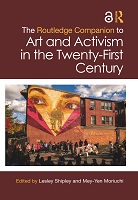Chapter 17 Atomized Solidarity and New Shapes of Resistance
Proposal review
Visual Activism in South Africa after Apartheid
Abstract
This chapter provides a concise history of visual activism in South Africa and focuses on how contemporary artists and activists make use of visual forms to intervene in public space, to document injustice, and to express dissent. The chapter argues that visual activism is best understood as a call to those who look to move from seeing and knowing to acting. Through analyses of works by visual activists Zanele Muholi, Haroon Gunn-Salie, and the Tokolos Stencils Collective, and through engaging with a campaign created by the social justice movement Section27, the essay shows how such work draws attention to homophobia and sexual violence; impunity for crimes against humanity; and ongoing inequality in the aftermath of apartheid. The essay also considers what occurs when visual activist works are detached from collective mobilizing and circulate within the neo-liberal art economy, producing forms of atomized solidarity.
Keywords
activism, Africa, apartheid, dissent, Haroon Gunn-Salie, homophobia, neo-liberal, resistance, Section27, sexual violence, , South Africa, Tokolos Stencils Collective, visual activism, Zanele Muholi, artists, art history, injustice, social justice, inequalityDOI
10.4324/9781003159698-21ISBN
9780367748173, 9780367748203, 9781003159698Publisher
Taylor & FrancisPublisher website
https://taylorandfrancis.com/Publication date and place
2023Imprint
RoutledgeClassification
History of art
The arts: general topics


 Download
Download